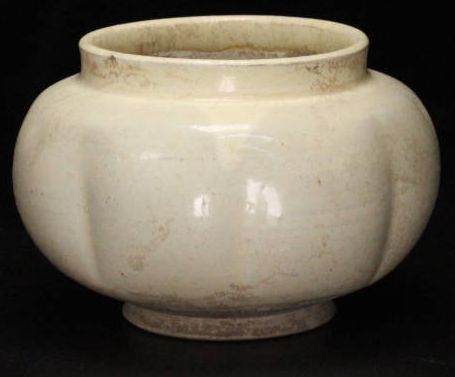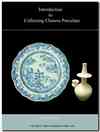Additional Information
for
Advanced Users
Articles with additional and more advanced information can be found in the forum.
- Short articles, comments and links for advanced users and collectors of more ancient types of Chinese porcelain.
- Detailed explanations regarding some porcelain types, and peripheral information.
- Info about the future of porcelain appraising, and more
To read these articles it is necessary to sign in (registration is free) at the Discussion Forum, then go to the Additional Info board.
Much of the information here is peripheral in nature and provides a wider outlook on the problems associated with collecting Chinese ceramics.

Octagonal white glazed jar, ca. 10th century
ARTICLES
Read about kiln grit adhering to some early Chinese ceramics, especially Zhangzhou (aka Swatow) wares. PDF file
Chinese Ceramics Production Methods
Round Items:
Round items were thrown on the wheel. For a long time, at least from the Yuan dynasty to the Qing dynasty, items were thrown in two or more parts, which then were stuck together. Thus, jars, vases, bottles, etc. should always have one or more horizontal seams in the body of the item, which are clearly visible, often this was or could not be removed on the inside. In many cases the trace of a seam is also visible on the outside of the porcelain body.
Square or Rectangular Items:
(Early Chinese manufacturing methods before separable moulds appeared)
The flat sides of the item, be it a vase, box, etc. would be separately created by hand. They were then fit together.
Therefore, with older items you will often find that items are not perfectly square or rectangular. A good point to check with older items. Of course, very high quality items like imperial wares would still have been made carefully enough so that everything was perfect.
Protruding Ornaments (Appliqués):
Manual production:
In some cases these were carved into the background material, but having a protruding ornament of limited size and shaving off all of the remaining background was often time-consuming. Thus, from very early on some of these ornaments were made by stucking the clay unto the flat surface. They may then have been worked on/carved further.
Using moulds:
After moulds came into use ornaments would often have been moulded together with the flat sides. In some cases that was all finished this way, but with some the details of the ornaments would have been worked on further.
With hand-moulding, especially with figurines, but also with rectangular or irregular shapes, finger imprints may be found on the inside. If there are none, we have to always consider the possibility that the item was made at a later time when machine moulding/injection was possible at the specific kiln or factory. Or, alternatively, the ornaments were stuck on later in old fashion.
Just to give an example -- Dehua kiln which is known for its blanc-de-chine figurines and white wares, is known to have introduced moulds in the 1930s, relatively late. If you have a Dehua figurine that was moulded in two parts, then there is a good chance that it is later than that. We can use this for dating items.
Each kiln may have started using moulds at different times.
This is not to say moulding started only in the 20th century. Some moulded ornaments were already made a thousand years ago, but not usually in closed or two-piece moulds.

